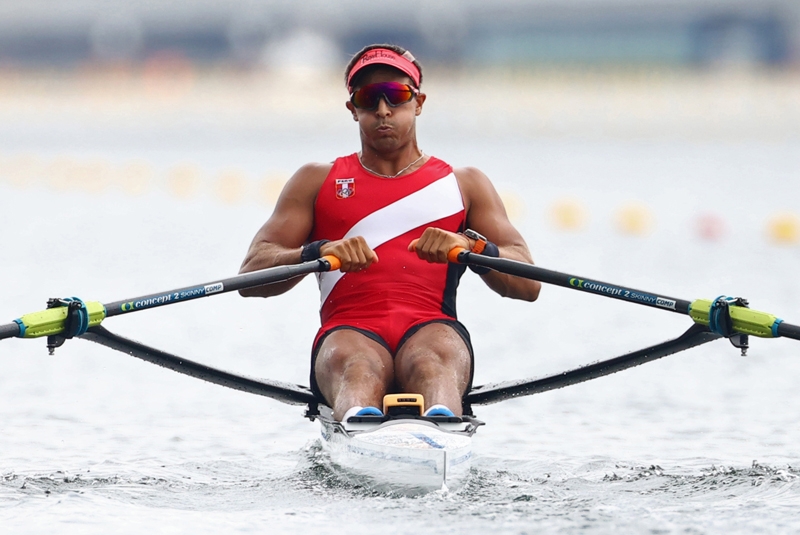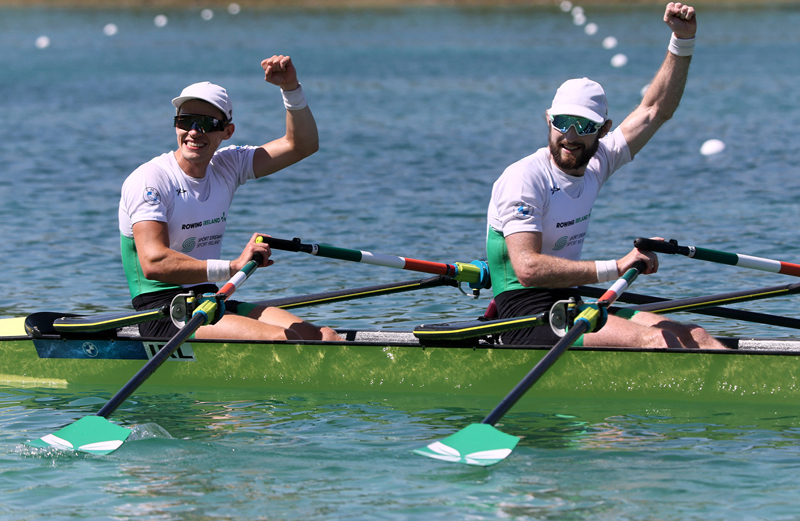You are viewing 1 of your 1 free articles. For unlimited access take a risk-free trial
Rowing performance: the engine of power!

SPB looks at new research on how muscle mass can influence rowing performance
Everyone knows that like running, swimming and cycling, rowing is a demanding endurance sport, which requires high levels of aerobic fitness. However, rowing may claim to outbid these other endurance activities in terms of fitness demands. This is partly because rowing simultaneously uses many of the upper body muscles in addition to those of the lower body. This in turn means that for any given effort level, the heart has to work harder in order to pump blood simultaneously to upper and lower body muscles than when pumping to lower body muscles alone, which in turn increases the cardiovascular demands.The demands of elite rowing
One of the earliest comprehensive studies to characterize the physiological demands and fitness levels of elite rowers makes for eye-popping reading! It found the following(1):- Elite oarsmen and oarswomen show outstanding aerobic and anaerobic qualities, typically having maximum oxygen uptake capacities in excess of 6.0 litres per minute.
- By the end of a race, elite rowers can incur oxygen debts (the amount of oxygen required to return to normal tissue oxygenation levels) of between 10 and 20 litres.
- The caloric expenditure of rowing during a 6-minute rowing ergometer exercise can reach 36kcals per minute - one of the highest energy costs reported for any predominantly aerobic-type sport.
- Elite oarsmen typically produce an average power output in excess of 390 Watts during a 6-minute simulated race, while elite oarswomen can attain an average in excess of 300 Watts.
- Oarsmen can also achieve very high ventilation (breathing) volumes being able to average above 200 litres per minute for 6 minutes of simulated rowing; oarswomen can ventilate at 170 litres per minute for 3 minutes of this exercise.
What constitutes the optimum rowing strength focus?
If strength training is a valuable tool to develop rowing performance, how should rowers best perform strength and conditioning training? Should they adopt a ‘train the whole body’ approach on the basis that rowing involves most of the major muscle groups in the body? Or instead, could a more focussed approach work? This question is important because as we’ve often explained in SPB articles, the time and physical effort involved in strength training ideally needs to produce the greatest performance gains for the lowest amount of time, effort and (unwanted) fatigue that results.The data on rowing performance and best strength training program types is unfortunately quite sparse. However, a brand new study just published in the Journal of Strength and Conditioning provides some fascinating insight. In this study, the researchers investigated the relative influence of total lean body mass and body fat percentage on maximal aerobic capacity (VO2max) and time to exhaustion in highly trained female collegiate rowers. More than this however, they also sought to determine the influence of upper body lean mass, lower body lean mass, and trunk lean mass on rowing performance – ie which muscle groups were most important in determining performance.
In this study, 107 NCAA division I female rowers aged 18-22 years, performed an incremental maximal rowing ergometer test to determine each rower’s VO2max and their maximal time to exhaustion (Tmax). Following this testing, all the rowers were assessed for total body mass, lean (ie fat-free) body mass, upper body lean mass, lower body lean mass and body fat percentage using a highly accurate scanning technique known as dual-energy x-ray absorptiometry (DEXA). Once the data was collected, the researchers looked to see whether and how the different measures of lean mass and body fat percentage were related to rowing performance.

The findings
What they found was as follows:- Maximum aerobic capacity (VO2max) was predicted by total lean muscle mass but not by body fat %. In plain English, more muscular rowers had higher VO2maxes regardless of the amount of body fat they carried.
- Time to exhaustion (Tmax) was also related to total lean muscle mass but not body fat %.
- The best predictor of high VO2max was in fact lower body lean muscle mass – NOT total muscle mass. Therefore carrying larger amounts of muscle in the upper body carried no benefit for rowing performance.
- The best predictor of Tmax was lean trunk muscle mass – not total muscle mass. In other words, rowers who were able to sustain high power outputs for longer tended to have excellent trunk musculature.
Implications for rowers
What do these results mean for rowers? The first thing to say is that the balance of musculature in the body is not only determined by training, but also by genetics. Some athletes can be naturally ‘strong’ in certain muscle groups even though they undertake minimal or no strength training for those muscle groups. So it is likely that some of the effect we are observing here is that rowers with natural ability just tend to have good levels of lower body and trunk strength/muscle mass.However, given that we know strength training can enhance rowing performance, it seems reasonable to assume that for maximizing outright power and aerobic capacity, the key in any strength program is to focus more on lower-body strength training – for example by performing mainly squats, lunges, leg presses etc. Where the goal is to extend maximal output and improve rowing endurance, there should also be some emphasis on trunk (particularly exercises targeting the lats and upper back muscles) and core training. However, from this data, it seems there’s little benefit in targeting the upper body musculature – ie shoulders and arms. Spending time and effort on these particular areas is unlikely to lead to significant performance gains. Having said this though, a little work for the upper body may still be beneficial in terms of providing overall balance.
References
- Sports Med. Jul-Aug 1984;1(4):303-26
- Front Physiol. 2020 Jul 21;11:888
- J Sports Sci. 2020 May;38(10):1186-1195
- J Strength Cond Res. 2022 Apr 29. doi: 10.1519/JSC.0000000000004259. Online ahead of print
Related Files
Newsletter Sign Up
Testimonials
Dr. Alexandra Fandetti-Robin, Back & Body Chiropractic
Elspeth Cowell MSCh DpodM SRCh HCPC reg
William Hunter, Nuffield Health
Newsletter Sign Up
Coaches Testimonials
Dr. Alexandra Fandetti-Robin, Back & Body Chiropractic
Elspeth Cowell MSCh DpodM SRCh HCPC reg
William Hunter, Nuffield Health
Keep up with latest sports science research and apply it to maximize performance
Today you have the chance to join a group of athletes, and sports coaches/trainers who all have something special in common...
They use the latest research to improve performance for themselves and their clients - both athletes and sports teams - with help from global specialists in the fields of sports science, sports medicine and sports psychology.
They do this by reading Sports Performance Bulletin, an easy-to-digest but serious-minded journal dedicated to high performance sports. SPB offers a wealth of information and insight into the latest research, in an easily-accessible and understood format, along with a wealth of practical recommendations.
*includes 3 coaching manuals
Get Inspired
All the latest techniques and approaches
Sports Performance Bulletin helps dedicated endurance athletes improve their performance. Sense-checking the latest sports science research, and sourcing evidence and case studies to support findings, Sports Performance Bulletin turns proven insights into easily digestible practical advice. Supporting athletes, coaches and professionals who wish to ensure their guidance and programmes are kept right up to date and based on credible science.











